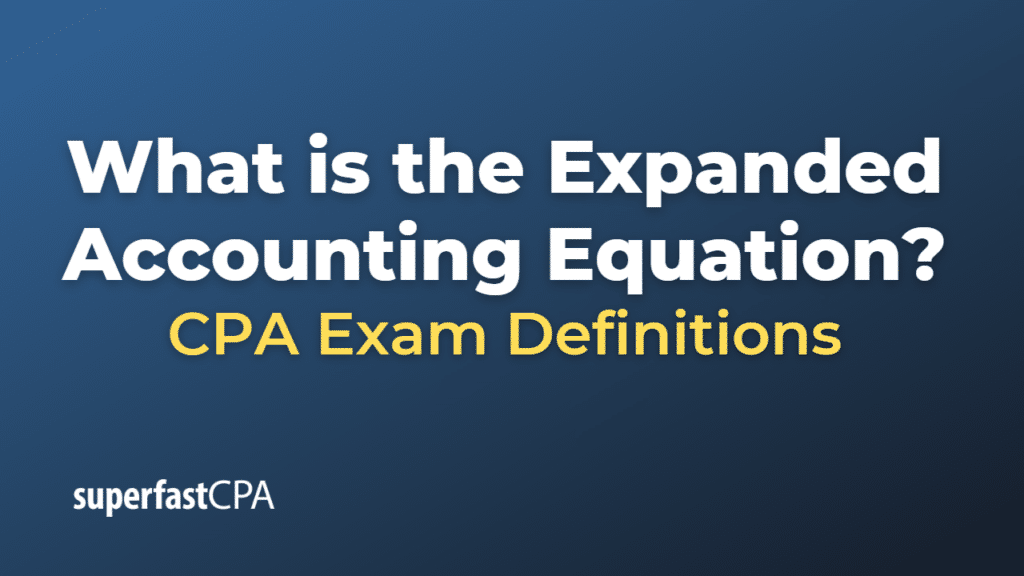Expanded Accounting Equation
The expanded accounting equation is a version of the basic accounting equation that provides more detail by breaking down the components of the owner’s equity section.
The basic accounting equation is:
Assets = Liabilities + Owner’s Equity
In the expanded accounting equation, owner’s equity is broken down into its components, which usually include:
- Owner’s Capital (or Stockholders’ Equity for corporations)
- Revenues
- Expenses
- Withdrawals (or Dividends for corporations)
The expanded accounting equation becomes:
Assets = Liabilities + Owner’s Capital + Revenues – Expenses – Withdrawals
This version of the accounting equation gives a more detailed view of the activities that affect owner’s equity over an accounting period.
For corporations, the expanded accounting equation would typically be:
Assets = Liabilities + Common Stock + Retained Earnings + Revenues – Expenses – Dividends
Here, “Common Stock” represents the owner’s capital, “Retained Earnings” is the accumulation of all net income (revenue minus expenses) not distributed to shareholders as dividends, and “Dividends” are the distributions of earnings to shareholders.
Example of the Expanded Accounting Equation
Let’s consider a simplified scenario for a sole proprietorship business to understand the expanded accounting equation.
Let’s assume that John started a business with $10,000 of his own money, took a $5,000 loan from a bank, made revenues of $8,000, incurred expenses of $3,000, and withdrew $2,000 for personal use.
In this scenario, here’s how we can apply the expanded accounting equation:
- Assets: John’s business assets include the $10,000 he invested and the $5,000 bank loan, totaling $15,000.
- Liabilities: The bank loan of $5,000 represents the business’s liabilities.
- Owner’s Capital: The money John invested, $10,000, represents the owner’s capital.
- Revenues: The business made revenues of $8,000.
- Expenses: The business incurred expenses of $3,000.
- Withdrawals: John withdrew $2,000 for his personal use.
Now, applying these values in the expanded accounting equation:
Assets = Liabilities + Owner’s Capital + Revenues – Expenses – Withdrawals
$15,000 = $5,000 + $10,000 + $8,000 – $3,000 – $2,000
$15,000 = $15,000
As you can see, both sides of the equation balance. This example provides a basic demonstration of how the expanded accounting equation works. In real-world scenarios, the components of the equation can be more complex and include many more items.













